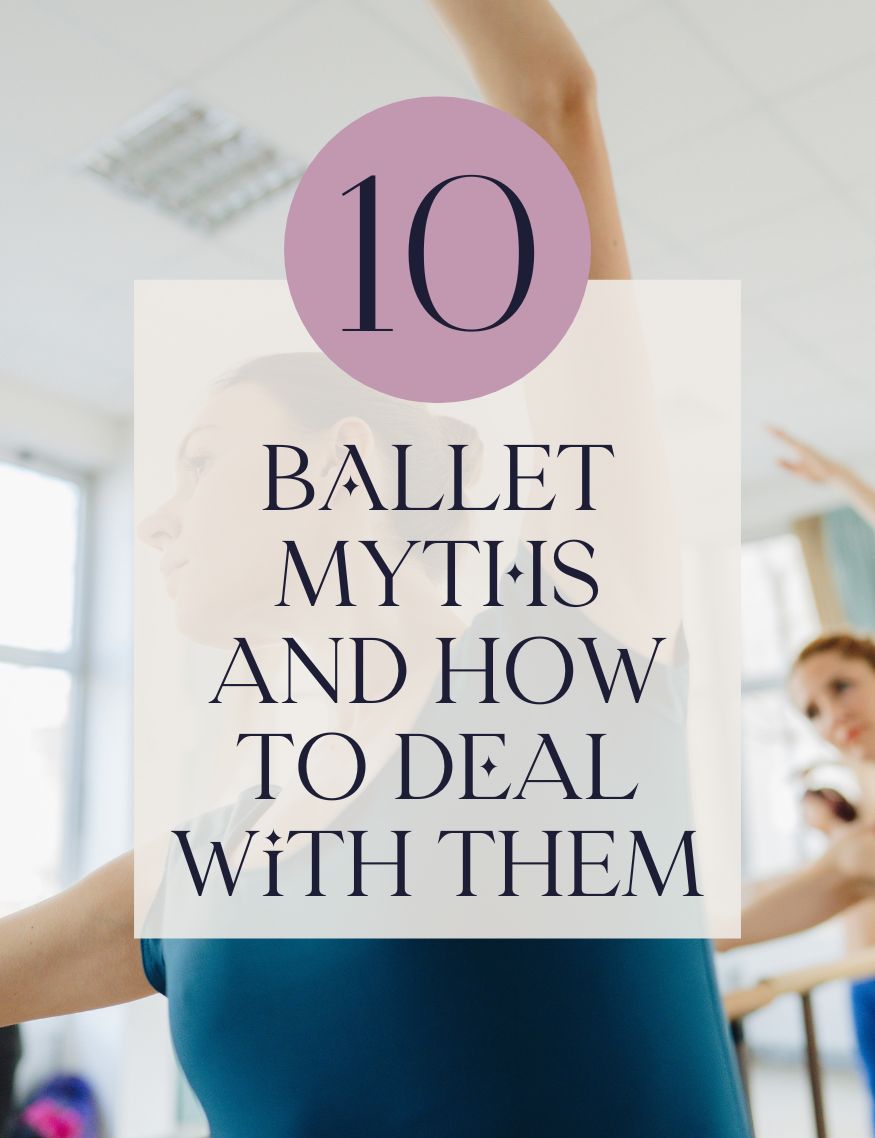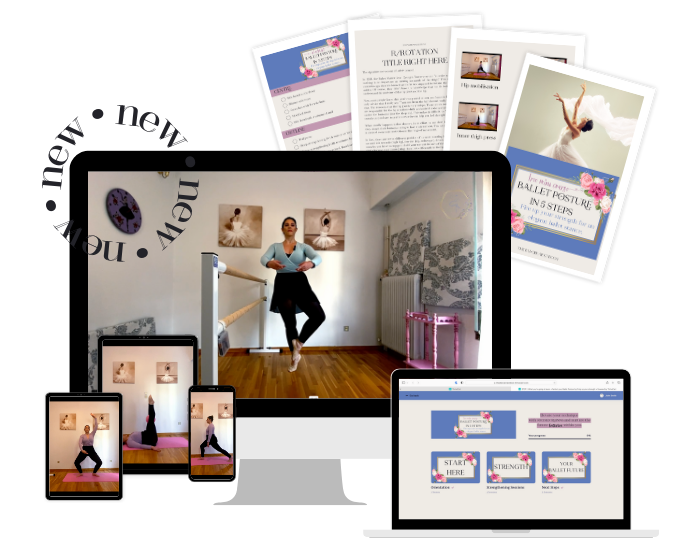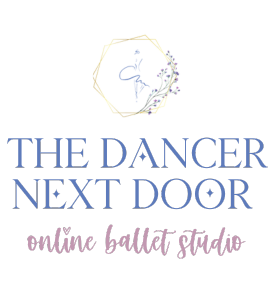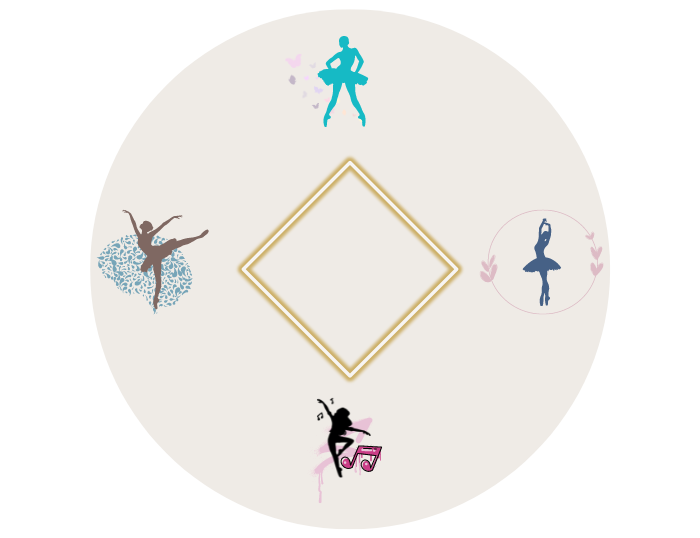BREaKING ADuLT BALLeT MYTHS AND STEREOTYPES
Ballet, with its graceful movements and timeless elegance, has captivated audiences for centuries. Yet, despite its enduring appeal, the world of ballet remains shrouded in adult ballet myths and stereotypes, particularly when it comes to adult dancers. In recent years, however, there has been a notable shift as more adults embrace ballet. And that’s not just a form of exercise, but as a source of personal enrichment and artistic expression.
In this article, I’ll delve into the prevalent stereotypes surrounding adult ballet dancers. I’ll attempt debunk these myths with insights and experiences from the dance community. From the belief that ballet is for a select few with specific body types to the misconception that it’s too late to start dancing as an adult, I’ll challenge these notions and celebrate the diversity and inclusivity of ballet.
Furthermore, I’ll explore the physical demands of ballet training and the profound journey of personal growth it offers. Beyond the technical aspects, ballet provides a platform for creativity and artistry. Evidently, it’s allowing you to express yourself in unique and meaningful ways.
Join me as we unravel the truth behind the stereotypes. Uncover the transformative power of ballet, and embrace the beauty of creativity and expression in dance.
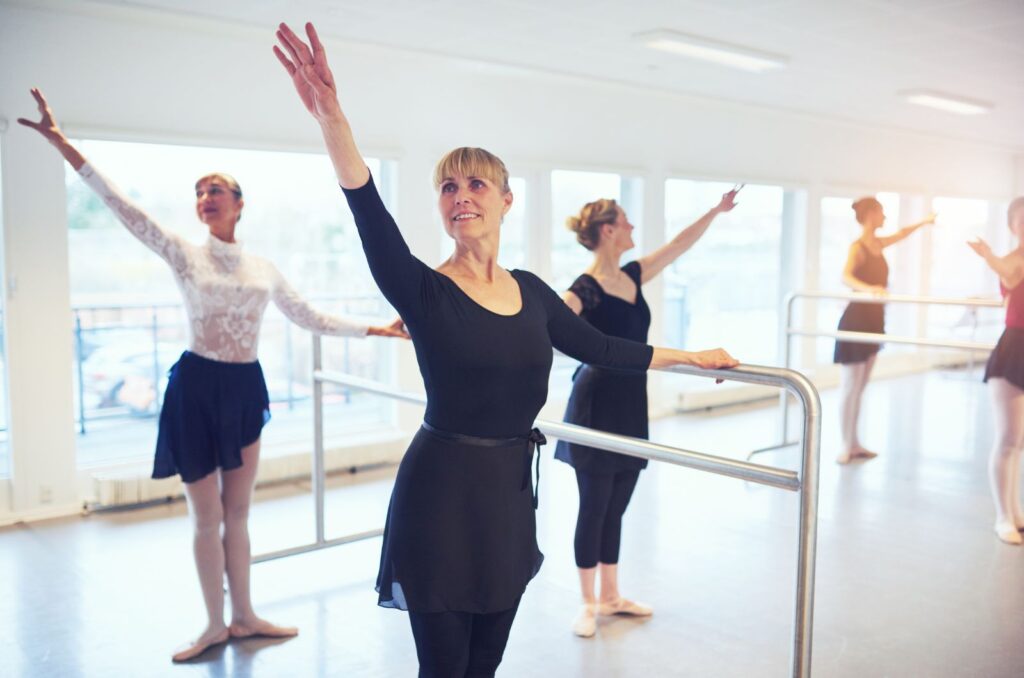
Ballet Stereotypes And How To Handle Them
More and more adults are starting ballet and rightfully so! There are so many benefits to taking up ballet as an activity that outweigh the disadvantages. If you’d like to read more on the benefits of ballet on body and mind, once you’re done with this article, you can read this one. However, there’s still a very long way to go regarding the stigma around ballet in adulthood.
Some of the stereotypes around this are the following:
- Adults are often dismissed as incapable of reaching the proficiency level achieved by those who started ballet in childhood.
- Adult ballet dancers are commonly patronised with comments like “It’s good that you’re trying.” This is implying a lack of expectation for their success.
- Ballet is mistakenly believed to be reserved for individuals with a specific body type. Often this body type refers to very thin, of Northern European descent, or a certain height.
- Adults may feel discouraged from starting ballet due to the misconception that it’s too late to begin.
- The idea that ballet is only for professionals or those aspiring for a professional career excludes many adults from participating.
- Adults may encounter scepticism or disbelief when they express interest in starting ballet later in life.
- There’s a prevailing notion that adult ballet dancers lack the grace and flexibility of younger dancers.
- The belief that adult ballet dancers are simply pursuing a hobby rather than serious artistic expression. Consequently, this undermines their dedication and passion for the art form.
Why is this happening?
Generally, stereotypes have their base on some truth, or part of a truth. That’s how they’ve created these adult ballet myths.
A stereotype is a widely held but oversimplified and generalised belief or idea about a particular group of people or things. Stereotypes often involve assumptions or judgments based on characteristics such as race, gender, age, profession, or other attributes. These beliefs may be based on cultural norms, societal perceptions, or personal experiences, but they can be inaccurate or misleading as they fail to account for the diversity and individuality within the group being stereotyped. Stereotypes can lead to prejudice, discrimination, and unfair treatment of individuals who are judged based on these simplified perceptions rather than their actual qualities or merits.
Let’s debunk these adult ballet myths
One of the main reasons ballet is perceived as exclusive to a particular body type is due to historical visibility. For the longest time, the public eye predominantly saw a narrow representation of dancers. While it’s true that well-known ballet companies adhere to strict physical standards during auditions, it’s important to note that less than 2% of dancers are professionals, and even fewer dance with these elite companies. This means that the majority of dancers do not conform to this limited mould.
I’ve encountered countless instances where people expressed sentiments like:
‘I like ballet, but I’m not flexible enough.’
‘I wish I had done ballet as a kid; it’s too late now.’
‘I’m too fat/short/tall for ballet.’
However, in my experience attending numerous ballet classes as both a student and a teacher, I have never encountered a class without diverse body types, weights, heights, and levels of flexibility and strength among the students.
Should those less flexible/strong/capable stop dancing? Or should they work hard to improve these skills? After all, flexibility, strength, and technique are all attainable skills.
Similarly, should those of us who don’t have a particular body type stop dancing? Or should we continue to dance and demonstrate that ballet can be beautiful on different body types? It’s worth noting that the vast majority of dancers worldwide fall into this diverse category, highlighting the importance of inclusivity in ballet schools across the globe.
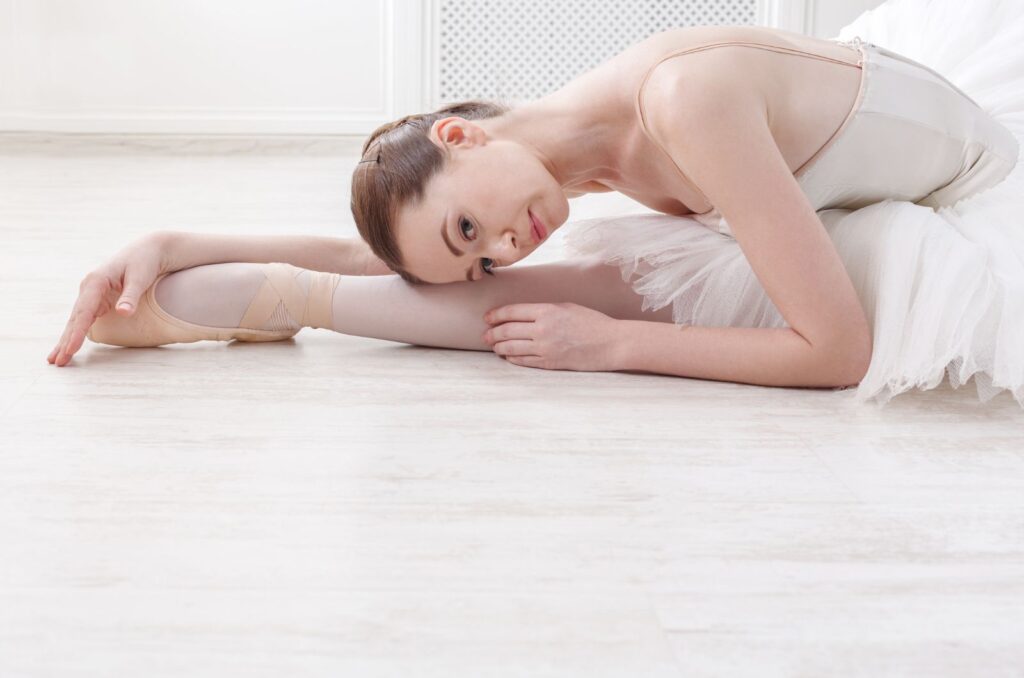
Physical Demands vs. Personal Growth
In ballet, the physical demands are undeniable. The art form requires strength, flexibility, endurance, and precision. From perfecting intricate footwork to achieving graceful extensions, dancers face a myriad of physical challenges in their training.
However, amidst these physical demands lies a profound opportunity for personal growth. Ballet is not merely about mastering steps; it’s a journey of self-discovery and transformation. Each plié, each arabesque, each pirouette or variation offers a chance to push beyond perceived limitations and unlock hidden potential.
As a dancer, you navigate a rigorous training regimen, you develop resilience, discipline, and perseverance. You learn to embrace setbacks as opportunities for growth and approach challenges with determination and grit. Every class becomes a stepping stone toward self-improvement, both physically and mentally.
Moreover, the discipline ballet cultivates, extends beyond the studio walls, permeating into every aspect of your life. You learn the value of dedication, time management, and goal setting, skills that are invaluable beyond the dance floor.
Ultimately, while the physical demands of ballet are undeniable, it is the journey of personal growth that truly defines the experience. Through perseverance and determination, you can transcend your physical limitations, emerging stronger, more resilient, and more empowered as an individual.
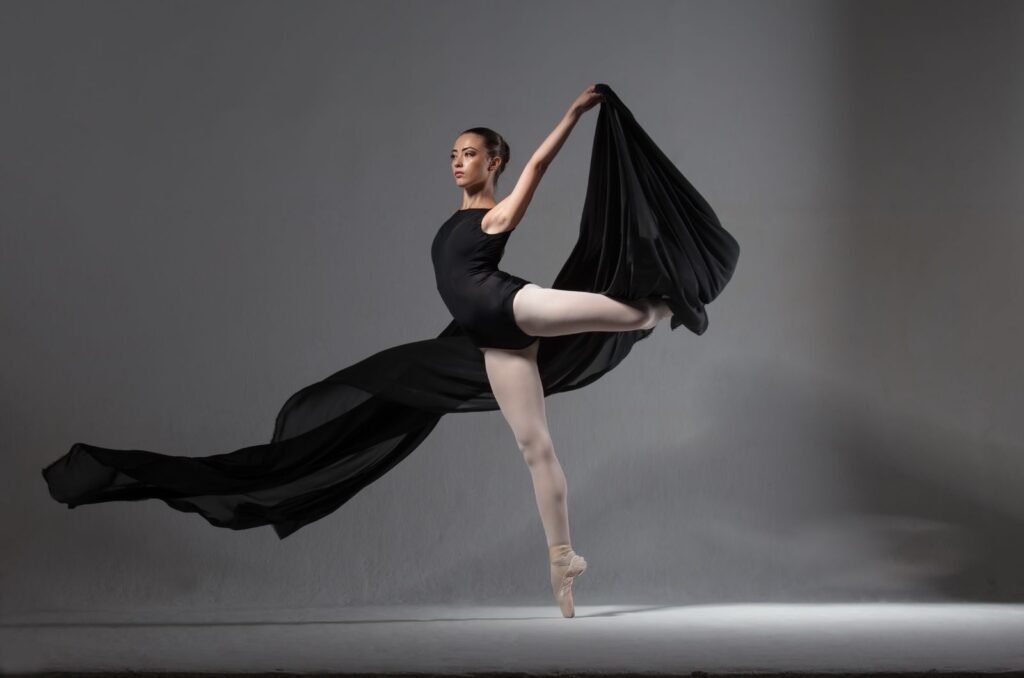
Creativity and Artistry: Embracing Expression in Ballet
While ballet is a highly technical and structured art form, it’s essential to recognise the significant role that creativity and artistry play in its practice. Beyond the precise execution of steps and movements lies a realm of boundless expression, interpretation, and individuality.
One common misconception about ballet is that it is rigid and formulaic, with little room for personal expression. However, the reality is quite the opposite. Ballet can offer you as a dancer a platform to unleash your creativity and infuse your unique personality into your movements.
At its core, ballet is a form of storytelling through movement. You have the opportunity to convey emotions, narratives, and themes through your choreography, gestures, and expressions, even if you’re just practising your barre.
Moreover, ballet should encourage you to interpret music and choreography in your own way, fostering a sense of individuality and artistic freedom. While there may be established techniques and choreographic structures, you can have the flexibility to imbue these elements with your personal style and flair.
Ballet classes should encourage you to explore and experiment with movement, pushing the boundaries of traditional technique to discover new possibilities. Whether it’s experimenting with different dynamics, exploring unconventional shapes, or incorporating elements from other dance styles, ballet provides a fertile ground for artistic exploration.
Ultimately, creativity and artistry are integral components of the ballet experience. By challenging the notion that ballet is purely technical, you can unlock new realms of expression, imagination, and self-discovery. Through your creative journey, you not only refine your technique but also cultivate a deeper connection to yourself and the ballet world.
Final thoughts on adult ballet myths
As we conclude our exploration into the world of adult ballet, it’s evident that the stereotypes and misconceptions surrounding this art form are ripe for debunking. From the physical demands of training to the journey of personal growth and self-discovery, ballet offers far more than meets the eye. It’s a testament to resilience, determination, and the power of artistic expression.
As you embark on your own ballet journey, whether as a seasoned dancer or a newcomer to the studio, remember this: ballet is not just about perfecting technique or conforming to preconceived notions of beauty. It’s about embracing your unique strengths, expressing yourself authentically, and finding joy in movement.
So, let’s continue to defy stereotypes, break the barriers, and celebrate the beauty of ballet in all its diversity. Whether you’ve only just started or you’re mastering complicated ballet steps and variations, know that your journey is valid, your passion is worthy, and your presence in the dance world is invaluable.
👉🏼 I’d love to hear from you! Share your thoughts, experiences, or questions about these adult ballet myths and ballet in general in the comments below. 👇🏼

